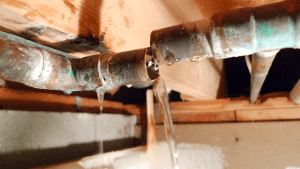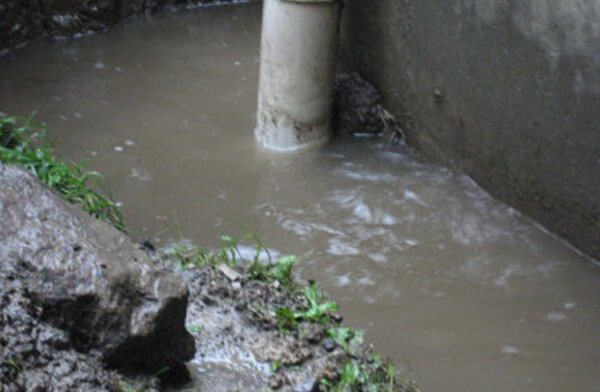Spot Hidden Water Line Leaks: Six Clever Tricks
Spot Hidden Water Line Leaks: Six Clever Tricks
Blog Article
Just how do you really feel on the subject of Leaking water lines?

Early detection of dripping water lines can minimize a potential catastrophe. Some small water leakages might not be visible.
1. Analyze the Water Meter
Inspecting it is a guaranteed means that aids you uncover leakages. If it moves, that shows a fast-moving leakage. This implies you may have a slow leakage that can also be underground.
2. Check Water Consumption
Assess your water costs and track your water consumption. As the one paying it, you need to notice if there are any disparities. If you detect sudden changes, regardless of your intake being the same, it suggests that you have leakages in your plumbing system. Keep in mind, your water expense ought to fall under the same array on a monthly basis. An abrupt spike in your bill indicates a fast-moving leak.
On the other hand, a steady rise monthly, despite the same behaviors, shows you have a slow leakage that's also gradually escalating. Call a plumber to completely examine your building, particularly if you really feel a warm location on your floor with piping underneath.
3. Do a Food Coloring Examination
When it involves water consumption, 30% comes from commodes. Examination to see if they are running correctly. Decline specks of food shade in the storage tank and wait 10 mins. If the color in some way infiltrates your dish throughout that time without flushing, there's a leak between the storage tank and also bowl.
4. Asses Exterior Lines
Do not fail to remember to inspect your exterior water lines also. Examination faucets by affixing a yard hose pipe. Should water seep out of the connection, you have a loose rubber gasket. Change this as well as guarantee all links are tight. It will certainly assist obtain it properly examined and kept each year if you've obtained a lawn sprinkler system. One little leak can squander tons of water and surge your water costs.
5. Examine as well as Evaluate the Circumstance
House owners need to make it a practice to examine under the sink counters as well as even inside cabinets for any type of bad odor or mold growth. These two red flags show a leak so prompt interest is needed. Doing regular examinations, also bi-annually, can save you from a significant trouble.
Inspect for stainings and damaging as most devices as well as pipelines have a life expectancy. If you presume dripping water lines in your plumbing system, don't wait for it to rise.
Early detection of dripping water lines can mitigate a prospective disaster. Some small water leakages may not be noticeable. Checking it is a proven way that aids you uncover leaks. One small leak can waste heaps of water as well as spike your water bill.
If you think leaking water lines in your plumbing system, don't wait for it to escalate.
The Dangers of Undetected Water Leaks
Mold
One of the most common results of undetected water leaks in your home is mold. Under the right conditions, mold can begin to grow and spread in just a day or two.
Moisture from water leaks combined with humidity and lack of ventilation allow mold spores to germinate and start spreading.
And while household mold doesn’t carry the same health risks as substances like asbestos, they can cause allergic reactions in people sensitive to them or with asthma.
Structural Damage
When water leaks occur in places we can’t see — above the ceiling, behind walls or beneath floors — they often have time to do some serious damage before making themselves known.
You might notice cracks or bubbles appear in your walls or a slow drip or water from the ceiling.
These are signs of water leaks and buildups in the structure of your home. If you don’t jump on these problems soon enough, the wood frame that supports your house could start rotting, leading to costly repairs and increasing the risk of disasters like ceiling or wall collapses.
Water Waste
According to the Alliance for Water Efficiency, the average home can lose anywhere from 2,000 to 20,000 gallons of water per year due to leaks.
High numbers like that might make you imagine a burst pipe spewing out water. But believe it or not, even a small, constant drip from a kitchen sink could add up to over a thousand gallons of wasted water in a single year.
And if you live in a place where you pay for every gallon of water you use, that adds up to a lot of dollars down the drain. So we understand leaks are bad. Let’s take a look at some of the common (and not-so- common) water leaks you might find around your home.
Flush Valve Flapper
The flush valve flapper is a rubber flap that sits above the flush valve at the bottom of the tank. It’s attached to the flusher with a chain. Over time, it can get worn out and lose its seal, causing an endless flow of water into the toilet bowl.
These leaks are hard to detect since they’re usually silent, but there’s a little insider trick you can use with just a little dye or food coloring:
Put a few drops in the toilet tank. Check the water in your toilet bowl 15 minutes later. If any of the color made it into the toilet bowl, you’ll know what the culprit is.
Fill Valve
The fill valve is what replenishes your toilet’s tank water after you flush. If you’ve ever looked inside your toilet tank and seen water gushing out of an upright plastic valve, that’s a faulty fill valve.
https://meetflo.com/blogs/flo/how-to-find-and-repair-water-leaks-a-comprehensive-guide

We were introduced to that editorial on Hacks to detect leaks through an acquaintance on our other site. Loved our article? Please share it. Let another person check it out. Thanks a lot for your time. Please come by our website back soon.
Apply Now Report this page